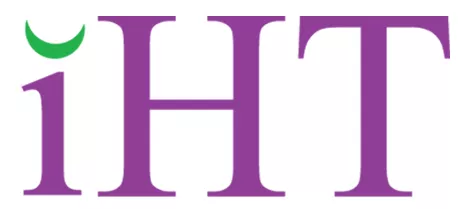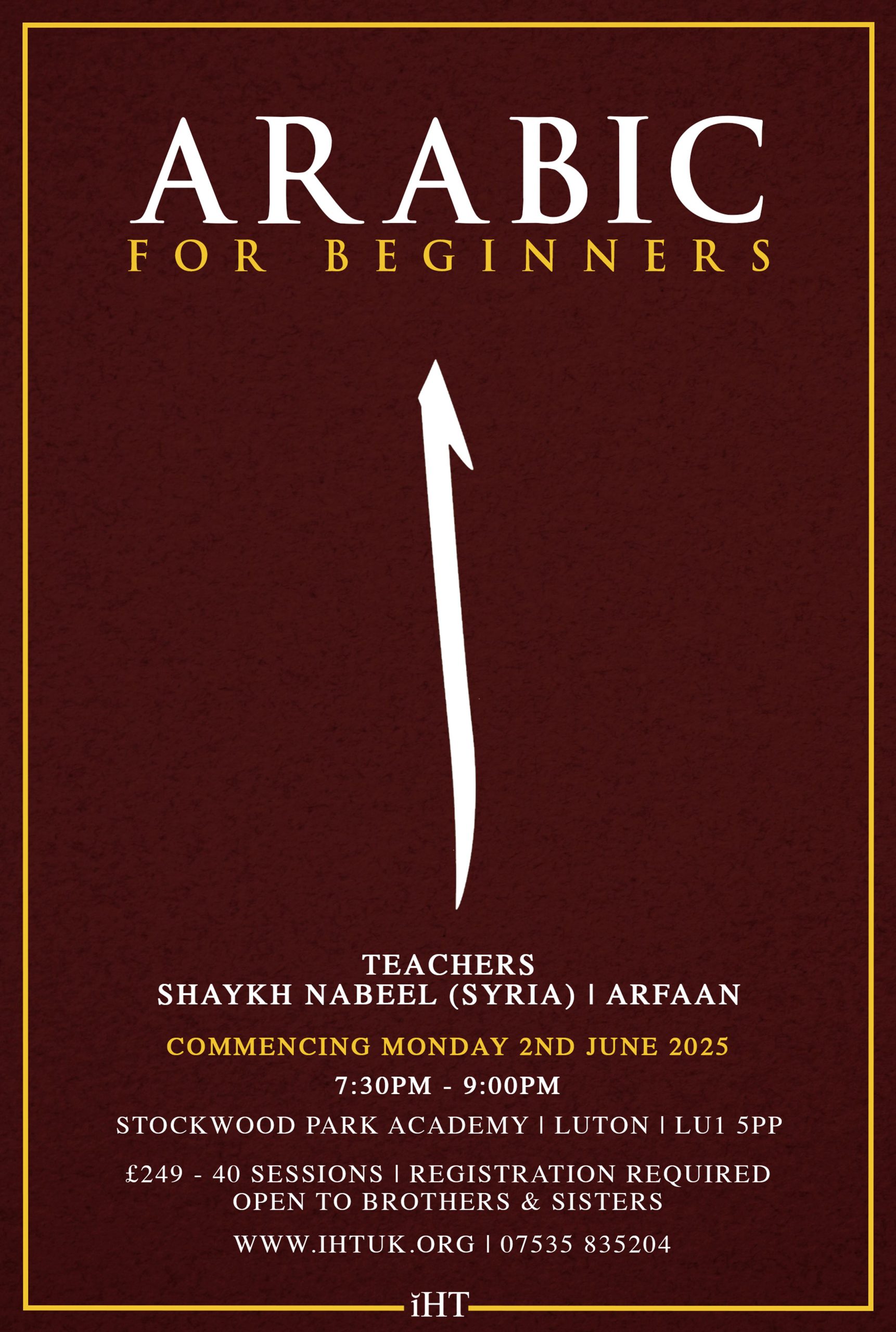Course Curriculum
Book a 1-to-1 Session with Instructor Would you like extra help or practice outside of class?
Shaykh Nabeel and Ustad Arfaan are available for free 1-to-1 sessions to support your learning. Use this section to book a short personalised session to review your lesson, practise speaking, or ask questions.
Take advantage of this opportunity to improve and get direct support!
Sorry this appointment type isn't available, please check back later
Sorry this appointment type isn't available, please check back later
-
Appointment
Introductory Book – Week 1 Monday 2nd July 2025
-
Lesson 1 – Greetings & Introductions
-
Lesson 1 – Quick Revision
51:42 -
Lesson 1 – Arabic Language
-
Write a Short Conversation in Arabic
Introductory Book – Week 2
-
Lesson 2 – Nature & Descriptive Words
-
Lesson 2 – Quick revision
21:19 -
Lesson 2 – Quiz
-
Write 3 Descriptive Sentences About Nature (in Arabic)
Introductory Book – Week 3
-
Lesson 3 – In the Market
-
Lesson 3 – Quick revision
33:35
Introductory Book – Week 4
-
Lesson 4 – Quick Revision
16:29 -
Lesson 4 – Full Class Video
00:00
Introductory Book – Week 5
-
Lesson 4 – Handout
Lesson 5 – Revision of previous handouts
Lesson 6 – Commands, Seasons & Months
-
Lesson 6 – Full Class Recording
01:19:14
Lesson 7 – Numbers 21 – 100, Conversation & Nationality In Lesson 7, we continued building on core language skills with a focus on:
Numbers (21–100): Understanding the structure of Arabic numbers beyond 20, including patterns and pronunciation.
Conversational Practice: Engaging in structured dialogues to reinforce sentence construction and improve speaking confidence.
Nationalities: Learning vocabulary related to countries and national identity, and how to ask and respond to questions about origin.
Please ensure you review the material covered to consolidate your understanding before the next session. Keep up the great work.
-
Lesson 7 – Full Class Recording
01:19:42 -
Lesson 7 – Home Work
-
Lesson 7 – Quick Revision
00:00
Lesson 8 – Dialogue, Singular Pronouns & Nationality In this session, students extended their conversational skills through structured dialogue practice, with a particular focus on introducing and responding to questions about nationality and identity. They were introduced to key singular pronouns (أنا، أنتَ، أنتِ، هو، هي) and learnt how to apply them within simple sentence structures.
Activities included:
- Dialogue practice using personal introductions
- Use of singular subject pronouns in context
- Asking and answering questions about nationality (e.g. ما جنسيتك؟)
- Vocabulary development related to countries and nationalities
The session encouraged students to speak in full sentences and supported the gradual development of confident oral expression in Arabic.
-
Lesson 8 – Class Recording
00:00 -
Lesson 8 – Homework
Lesson 10 – Pages 24, 25, 26 – Vocab on page 26 In this session, students completed the first half of Unit 1 and began working through the second part of the unit. The focus was on building vocabulary, with an emphasis on recognising, pronouncing, and using a new set of words in simple contexts.
Activities included:
Introduction and repetition of new vocabulary items
Listening and speaking practice using the target words
Word recognition through matching and memory-based activities
Applying the vocabulary within short phrases and sentences
The session supported students in expanding their word bank, laying the foundation for greater fluency and confidence in using Arabic in everyday contexts.
-
Lesson 10 – Class Recording
01:26:15
Lesson 11 – Occupations In this session, students were introduced to the topic of occupations and explored a new set of words related to jobs and professions. The focus was on recognising, pronouncing, and using these terms in simple contexts. Activities included the introduction and repetition of occupation-related vocabulary, listening and speaking practice to reinforce pronunciation and usage, word recognition through matching and memory-based activities, and applying the vocabulary within short phrases and simple sentences to describe people’s jobs. The session supported students in broadening their vocabulary, enabling them to talk about different professions and strengthening their ability to use Arabic in everyday conversations.
-
Lesson 11 – Class Recording
01:16:37
Lesson 12 – Present Tense Verb
-
Lesson 12 – Present tense verb
01:29:37 -
Lesson 12 – Short revision video pages 26-29
26:57
Lesson 13 – Masculine and Feminine words In this session, students learned about masculine and feminine words in Arabic and began to understand how gender affects vocabulary use. The focus was on recognising the difference between masculine and feminine forms, practising their pronunciation, and applying them in simple contexts. Activities included the introduction and repetition of gendered vocabulary, listening and speaking practice to distinguish between masculine and feminine words, recognition exercises through matching and memory tasks, and applying the words within short phrases and sentences. The session supported students in building a clearer understanding of word gender, helping them to use Arabic more accurately and confidently in everyday communication.
-
Lesson 13 – Recording
01:07:59 -
Homework
Lesson 14 – Family In this session, students learned vocabulary for close family members such as dad, mum, brother, sister, and granddad. The focus was on recognising and pronouncing these words correctly and practising their use in simple contexts. Activities included the introduction and repetition of family-related vocabulary, listening and speaking practice to support accurate pronunciation, recognition tasks to build familiarity, and applying the words within short phrases and sentences. The session helped students gain confidence in talking about their own families and laid the foundation for using Arabic more naturally in everyday conversations.
-
Lesson 14 Recording
01:28:00
Lesson 15 – Dual and Plural pronouns In this session, students continued learning vocabulary for family members while also being introduced to dual and plural pronouns in Arabic. The focus was on recognising how pronouns change depending on whether we are talking about two people or a group, and applying them when speaking about family members. Activities included practising the new family-related words, repeating and listening exercises to reinforce dual and plural pronouns, recognition tasks to distinguish between singular, dual, and plural forms, and applying the vocabulary in short phrases and sentences about different family members. The session supported students in developing greater accuracy and confidence in their use of Arabic, particularly when describing relationships and talking about more than one person.
-
Lesson 15 – Monday 22nd September Class Recording
01:16:35
Lesson 16 – Recap on Dual and Plural Pronouns In this session, students revisited the use of dual and plural pronouns in Arabic to strengthen their understanding and accuracy. The focus was on recognising the differences between singular, dual, and plural forms and practising their correct usage in simple contexts. Activities included listening and repetition exercises, speaking practice to apply pronouns in everyday situations, and short tasks linking the pronouns back to previously learned family vocabulary. The session reinforced students’ ability to use dual and plural pronouns confidently, supporting them in building more accurate sentences and improving their fluency in Arabic.
-
Lesson 16 – Monday 29th September Class Recording
01:17:24
Lesson 17 – Demonstrative Pronouns In this session, students were introduced to demonstrative pronouns in Arabic and explored how to use them when referring to people and objects. The focus was on recognising the different forms of demonstrative pronouns, practising their pronunciation, and applying them in simple sentences. Activities included repetition and listening practice, recognition tasks to link pronouns with the correct nouns, and short speaking exercises using family and everyday vocabulary. The session supported students in developing greater accuracy in their sentence building and gave them the tools to identify and point to things in Arabic with confidence.
-
Lesson 17 – Monday 6th October Recording
01:16:47
Lesson 18 – How Many? In this session, students learned how to use the question word “kam” to ask “how many” in Arabic. The focus was on understanding how to form simple questions and answers involving numbers and objects. Activities included repetition and listening practice using “kam” in different contexts, recognition tasks linking numbers with nouns, and short speaking exercises to ask and answer questions about quantities. The session supported students in building confidence when using numbers in conversation and helped them apply question structures naturally in everyday Arabic.
-
Lesson 18 – How Many?
00:00
Lesson 19
-
Lesson 19 – 20th October
01:23:33
Student Ratings & Reviews
5.0
Total 1 Rating
5
1 Rating
4
0 Rating
3
0 Rating
2
0 Rating
1
0 Rating
Nice

